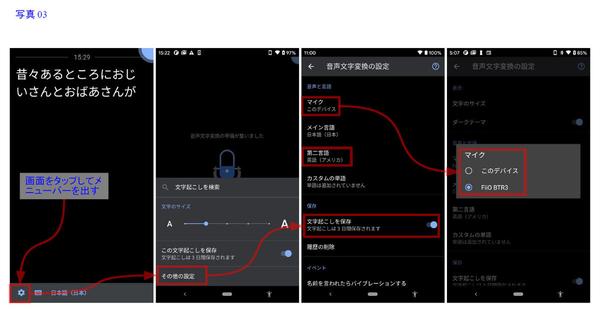"Portable Wi-Fi" Review
25/03/2022

Unfortunately, recording apps on PCs and smartphones may fail recording even if the user has no fault.Recording may be interrupted when affected by other apps or when the load on the system is heavy.In addition, there is room for problems such as unrecorded.The bug occurs when the app is upgraded or the OS update.Even with the same app, changing the smartphone may not work correctly.
If you check if the recording can be done correctly in advance, you may prevent failure.However, the timing of upgrading apps and systems is many times a year, and you may not be aware of it, so you have to check every time before recording.Even if you know the problem, it takes time to find a substitute app, install, and check it.Considering such a thing, it is easy to use a dedicated device that can definitely be done for recording that does not allow failures.
So, is it useless to handle audio with a smartphone?That is not the case.A smartphone is not just a recording, but a way to convert audio into text on the spot.Separately from recording, if there is a text -ized one, the work efficiency of the work will increase.The Microsoft365 version Word and Google Docs can convert Japanese audio into letters, but only works when the window has a focus.For this reason, smartphones are convenient to convert real -time audio into letters while using a PC for memos.
The Android has a function called "Live Transcription" as standard.This function is Android 5.If it is 0 or more, it is possible to download it from the Play store and incorporate it.However, when using, the server and communication on the Google side are required.Depending on the model, condition, and usage environment, it may not be possible to make it complete text, but if you have a proper recording, you can make it text later, so it will not be a big problem.

There is an application/service called Otter that distinguishes speakers if the recognition language is limited to English.It can be used for free if it is less than a certain period of time every month, and there is a paid service if the recorded amount is large.As long as you use it in the interview, "Otter" is easier to use than "voice character conversion".However, the purpose of both is different in the first place.OTTER assumes a meeting, whereas voice character conversion assumes conversation support for people who are difficult to hear.Otter is better to use at work, but it doesn't support Japanese so far.
Voice character conversion is used after enabling the function in Android's "Settings ⇒ user assistance ⇒ voice character conversion" (Photo 02).When enabled, a doll (Hitogata) icon will be displayed at the right end of the navigation bar at the bottom of the screen (in the case of setting the bar).If you tap this, the voice character conversion will always start.
To make it available immediately, you should complete the settings in advance.Start the voice character conversion, tap the screen, and tap the gear icon from the menu bar below.Since the simple settings are opened, the detailed settings are set in "Other settings" (Photo 03).
Turn on "Save Character" and specify the second language if necessary.In the voice character conversion, two languages can be selected and can be manually switched during operation.Since the storage is up to 3 days, the text should be saved in another application immediately after the recording.I forget if I want to do it later.Press and hold the text, "Select Voice Character Conversion" (or "Select All"), "Copy", and then paste it on another app (Photo 04).With "KEEP memo", which is standard on Android, it is easy to paste, and you can access your PC via a web browser.
It is important to note that voice character conversion corresponds to the built -in microphone of the smartphone or the headset.Switch which microphone to use with the above -mentioned "Other Settings ⇒ Mike".Note that if you reconnect the Bluetooth headset, you may automatically return to the headset side microphone.The message of the microphone switching is displayed, but it is necessary to be aware of which microphone is valid while using voice character conversion.
The location of the built -in microphone is different depending on the smartphone, so check in advance in the instructions.Depending on the model, the voice may not be recognized unless the "main" microphone for voice input is turned to the sound source.If you have multiple microphones, some models contain noise canceling microphones, and if you turn them to the sound source, they may be recognized as bag round noise.
When the voice character conversion is running, a fan shape is displayed in the upper left of the screen.This fan type displays the audio input level.To check the valid microphone, try to scratch the opening of the microphone lightly to the extent that no sound comes out.You can check if the microphone is working with a fan -shaped movement.When there are multiple microphones, the larger fan -shaped movement is the "main" microphone.
If you want to make the recorded voice perceived, it is more convenient to use Google Document (Web version) or Word function on Windows.I would like to explain this opportunity again.